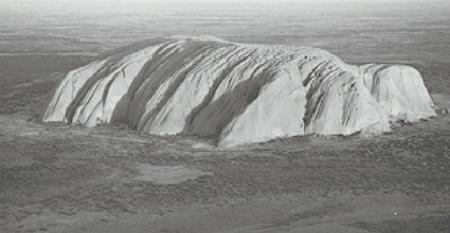Australia’s Finance Sec tor Converts to Block chain
Commonwealth Bank of Australia and ASX are pioneering blockchain technology in Australian finance. Blockchain, or digital ledger, technology has attracted attention as an alternative to current technology, such as the Clearing House Electronic Sub-register System(CHESS) used by ASX, which is 20 years old.
The technology behind Bitcoin uses complex mathematical algorithms to cryptographically combine sets of data, such as financial transactions, into a“block” by generating unique codes, or“hashes”, so if any information changes, it creates a completely new hash that forms part of a new block. Blocks are locked chronologically into a “chain”, creating an immutable ledger. A transaction is approved by those involved before a block is created, or “mined”. Then the blockchain is simultaneously updated for the whole network.
A decentralized ledger appeals in finance, as it operates under complete transparency, making corruption nearly impossible. Don Tapscott, business executive, wrote in an article at Davos,“This ledger represents the truth because mass collaboration constantly reconciles it.”The financial services agencies would use a “permissioned”network, open only to authorised members, but nonetheless a transparent, decentralized platform.
Commonwealth Bank of Australia participated with 10 other banks in the first experiment conducted by financial technology company, R3 CEV, to explore blockchain technology. The banks completed a digital transaction that was settled almost simultaneously, announcing their success on Jan. 20th.Though the experiment did not demonstrate any advancement in blockchain technology, it validated the premise of international financial cooperation.
Meanwhile, ASX signed a contract with distributed ledger technology company, Digital Asset Holdings, announced on Jan. 22nd. Digital Asset Holdings was chosen out of 400 companies, as part of ASXs 4-year upgrade plan.
ASX has invested A$14.9million for a 5% stake in the company and for their help in developing technology to replace CHESS, pending a final decision in 2017. ASX CEO, Elmer Funke Kupper, believes the process should be streamlined significantly: “we can now trade equities in 150 microseconds, then it takes 2 days to settle. That makes no sense.”
Blythe Masters, CEO of Digital Asset Holdings, commented in interview with Australian Financial Review, “distributed ledger technology brings many benefits and efficiencies to wholesale financial markets including, reducing cost, reduced counterparty risk, reduced latency, enhanced security, increased transparency, ease of reporting, and reduced errors. These are all important to regulators.”endprint
ASX is one of 13 investors that contributed to $52 million raised in January, but according to Masters, the project with ASX “is the first large-scale real-world deployment of such technology, which could have great significance for the Australian economy”.
The whitepaper by financial services company, DTCC, called blockchain “a generational disruptive force”, but emphasised the need for consensus within the financial industry and highlighted the question of “whether using the platform is more cost effective than improving existing technology and wheth-er it can overcome its inherent scale and performance challenges.”DTCC summarised that blockchain technology is still in its infancy, but given time, has the potential to reinvent international finance.
Broadspectrum Rejects Ferrovial Bid
Australian company, Broadspectrum, formerly Transfield Services, have called shareholders to reject a bid from Spanish company, Ferrovial SA. Originally set for 8th Feb., Ferrovial SA has extended the offer deadline to 7th March, requiring the minimum support from 50.01% of the shares, with the top 15 shareholders owning 72%.
Broadspectrum recommended shareholders vote against the A$715 million (A$1.35 per share) takeover offer, saying “your directors unanimously recommend that you reject the offer”on the basis that “Broadspectrum shares are worth a lot more than Ferrovial is offering. This is… supported by the independent expert who has concluded that the offer is not fair and not reasonable.”
Ferrovial originally offered Broadspectrum A$1 billion in December 2014, which they withdrew after little support. Ferrovial have justified the substantially lower offer as being adapted to the current economic climate, but Broadspectrum has accused Ferrovial of being “opportunistic, and [seeking] to take advantage of the disconnect between the recent weakness in Broadspectrums share price and the recent performance of Broad spectrums business.”
Broadspectrum pointed out that since Ferrovials offer, it has renewed a one-year contract for its offshore detention centres on Nauru and Manus, its biggest sources of revenue, although it is no longer the single preferred bidder for the full five-year contract, and has signed a new contract with NSW Land and Housing Corporation, worth up to$950 million.
However, Ferrovials offer came after an 18-month low close of A$0.85, after which Broadspectrums shares rocketed by almost 50%. Ferrovial argues that if it had not been for their offer, Broadspectrums shares would have declined even further, and that their shares offer “cash consideration”, as opposed to “the uncertain future of Broadspectrum shares”, which Morgan Stanley analysts suggest are volatile, as“the fundamental outlook for Broadspectrum [is] pressured with an overreliance on the Manus Island and Nauru detention centre contract for profitability, heightening earnings risk.”endprint
Shares in the company have been mostly falling since December 2014, when Broadspectrum was criticised by human rights groups for child and sexual abuse of asylum seekers, among other human rights violations, taking place in the detention centres. Following this, the company changed its name, as the Belgiorno-Nettis family sold their 11.3% stake and withdrew the companys right to the name “Transfield Services”.
Despite this, Independent financial advice company, Ernst & Young, have valued the companys shares at A$1.60-A$1.85, above Ferrovials offer, but lower than originally valued (A$1.71-A$1.98).“Broadspectrum is in a stronger position now than in December 2014 when Ferrovial indicated a willingness to pay significantly more for your Broadspectrum shares,” wrote Chairman Diane Smith-Gander in a letter to share-holders.
Broadspectrum expects its fullyear underlying earnings before interest, taxation, depreciation and amortisation (EBITDA) to be between A$280 million and A$300 million, while its half-year EBITDA was announced as A$124.7million. With the publication of their half-year figures, Broadspectrum also announced their intention to buy back as much as 10% of shares over the next 12 months starting in early March.
Untapped Potential Waits in Northern Territory
With 2015 as the hottest year on record, the Australian drought sparked new calls for the Northern Territory to be cultivated. Sparsely populated, Northern Australia is full of economic potential, containing 17 million hectares of arable land, as well as sufficient rainfall, of which only 2% is currently used for irrigation.
At the moment, farmers in the Northern Territories struggle to survive droughts, and while there is emergency financial assistance, red tape has often hindered land owners attempting to secure help.
If investment is sought, the arable land around Darwin has the potential for more agriculture, renewable energy, tourism and tropical medicine. “Its like there is a developing country within a developed nation,” Trade Minister Andrew Robb observed, “There is undeveloped, untouched vast land that is about the size of Cambodia”.
In the past it has been impossible to develop this area due to lack of funds. Head of Townsville Chamber of Commerce, Troy Popham, stated, “It is going to cost some money, but the rewards it will deliver to the country are enormous”.
The necessary funds are predicted to be around 600 million AUD, primarily to create a large irrigation network and improve transport links to Darwin, according to Andrew Gray, Chairman of Northern Territory Livestock Exporters Association, “the pastoral industry has been crippled by poor roads…[during the wet season] roads become impassable for passenger vehicles let alone livestock.”endprint
By improving the roads and rail freight links, and opening up airstrips to international flights, which currently only land in major southern cities, not only would Australias infrastructure benefit, but opportunities for further exports and foreign trade would open up.
Despite the fear that large investment into the area would probably require large foreign businesses to invest and would therefore provide little support to local farms; those in the business industry have encouraged the idea, suggesting that Darwin would be an ideal location for supplying Asias food requirements. Not only is it geographically convenient for most of Asia, but Asias growing middle class is expected to reach 2.36 billion AUD by 2030 up from 1.95 billion AUD in 2015, along with an expanding population, provid- ing rising income levels and increasing demand.
Australia hopes that the TransPacific Partnership (TPP) deal that was recently agreed upon will help with obtaining investors to develop the land and make trade with Asia possible. China, however, has already made moves towards this investment, with the Landbridge Group signing a lease agreement with the government of the Northern Territory, giving them control of Darwin port for 99 years. The United States and Japan are both concerned about this development following the conclusion of TPP discussions, especially as Darwin is also a major military output for the United States in the South China Sea. However, the TPP could take 2 years to take effect, and it would appear that China is keen to establish a strong link with Darwin in the meantime.
Woolworths, Lowes Exit Masters Venture
With 2015 as the hottest year on record, the Australian drought sparked new calls for the Northern Territory to be cultivated. Sparsely populated, Northern Australia is full of economic potential, containing 17 million hectares of arable land, as well as sufficient rainfall, of which only 2% is currently used for irrigation.
At the moment, farmers in the Northern Territories struggle to survive droughts, and while there is emergency financial assistance, red tape has often hindered land owners attempting to secure help.
If investment is sought, the arable land around Darwin has the potential for more agriculture, renewable energy, tourism and tropical medicine. “Its like there is a developing country within a developed nation,” Trade Minister Andrew Robb observed, “There is undeveloped, untouched vast land that is about the size of Cambodia”.endprint
In the past it has been impossible to develop this area due to lack of funds. Head of Townsville Chamber of Commerce, Troy Popham, stated, “It is going to cost some money, but the rewards it will deliver to the country are enormous”. The necessary funds are predicted to be around 600 million AUD, primarily to create a large irrigation network and improve transport links to Darwin, as, according to Andrew Gray, Chairman of Northern Territory Livestock Exporters Association,“the pastoral industry has been crippled by poor roads… [during the wet season] roads become impassable for passenger vehicles let alone livestock.”By improving the roads and rail freight links, and opening up airstrips to international flights, which currently only land in major southern cities, not only would Australias infrastructure benefit, but opportunities for further exports and foreign trade would open up.
Despite the fear that large investment into the area would probably require large foreign businesses to invest and would therefore provide little support to local farms, those in the business industry have encouraged the idea, suggesting that Darwin would be an ideal location for supplying Asias food requirements. Not only is it geographically convenient for most of Asia, but Asias growing middle class is expected to reach 2.36 billion by 2030 up from 1.95 billion in 2015, along with an expanding population, providing rising income levels and increasing demand.
Australia hopes that the TransPacific Partnership (TPP) deal that was recently agreed upon will help with obtaining investors to develop the land and make trade with Asia possible. China, however, has already made moves towards this investment, with the Landbridge Group signing a lease agreement with the government of the Northern Territory, giving them control of Darwin port for 99 years. The United States and Japan are both concerned about this development following the conclusion of TPP discussions, especially as Darwin is also a major military output for the United States in the South China Sea. However, the TPP could take 2 years to take effect, and it would appear that China is keen to establish a strong link with Darwin in the meantime. endprint
endprint

